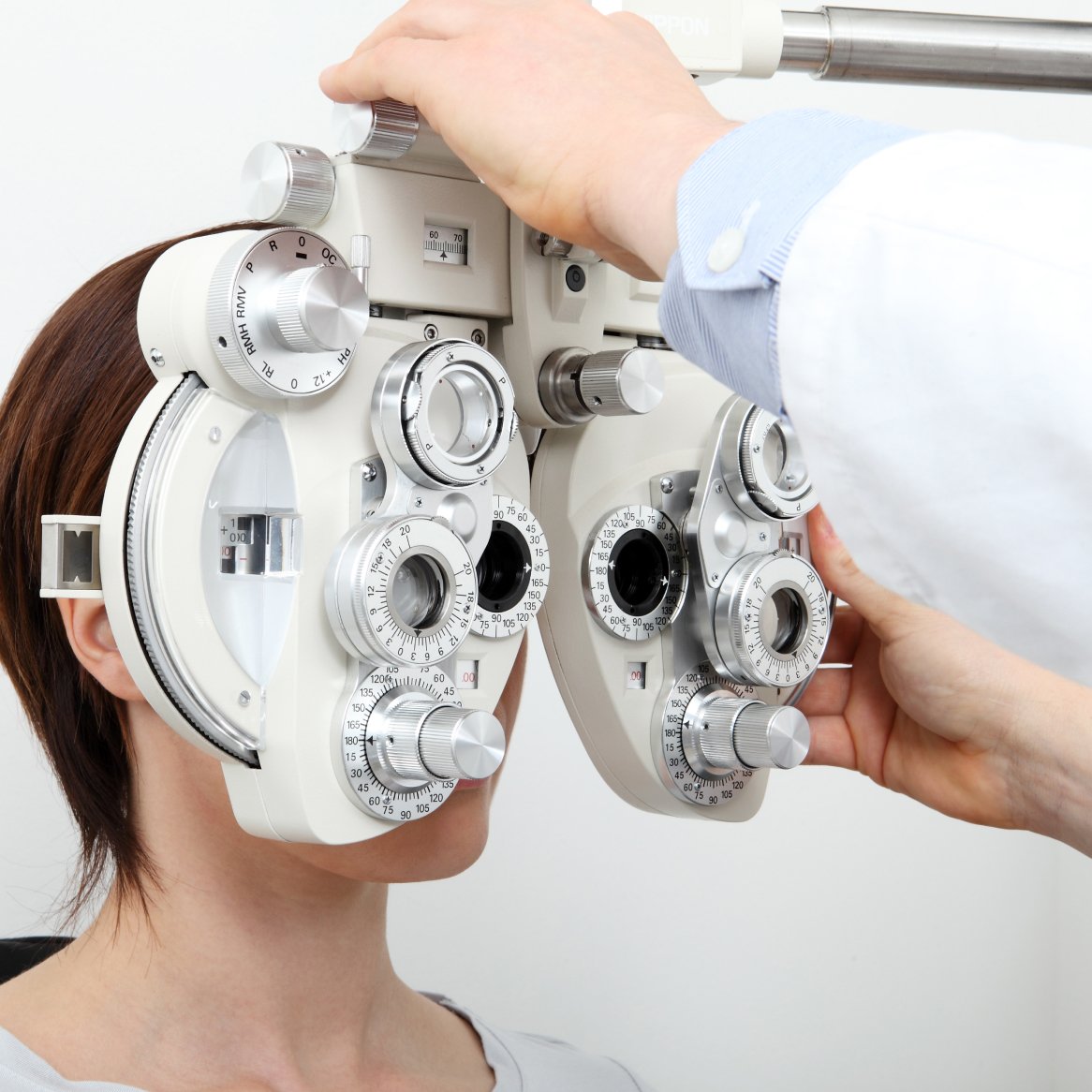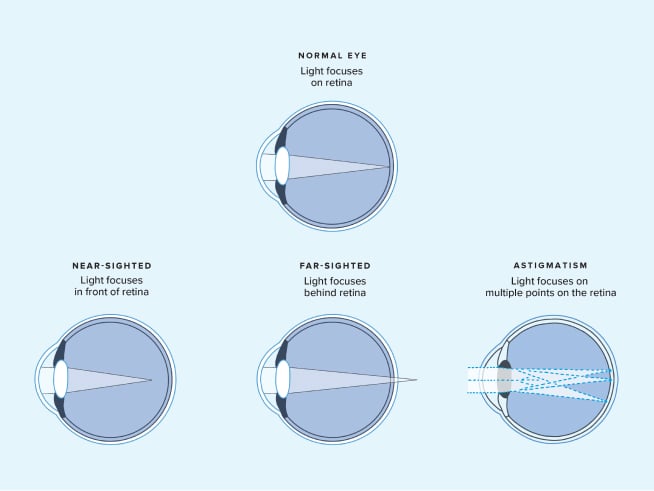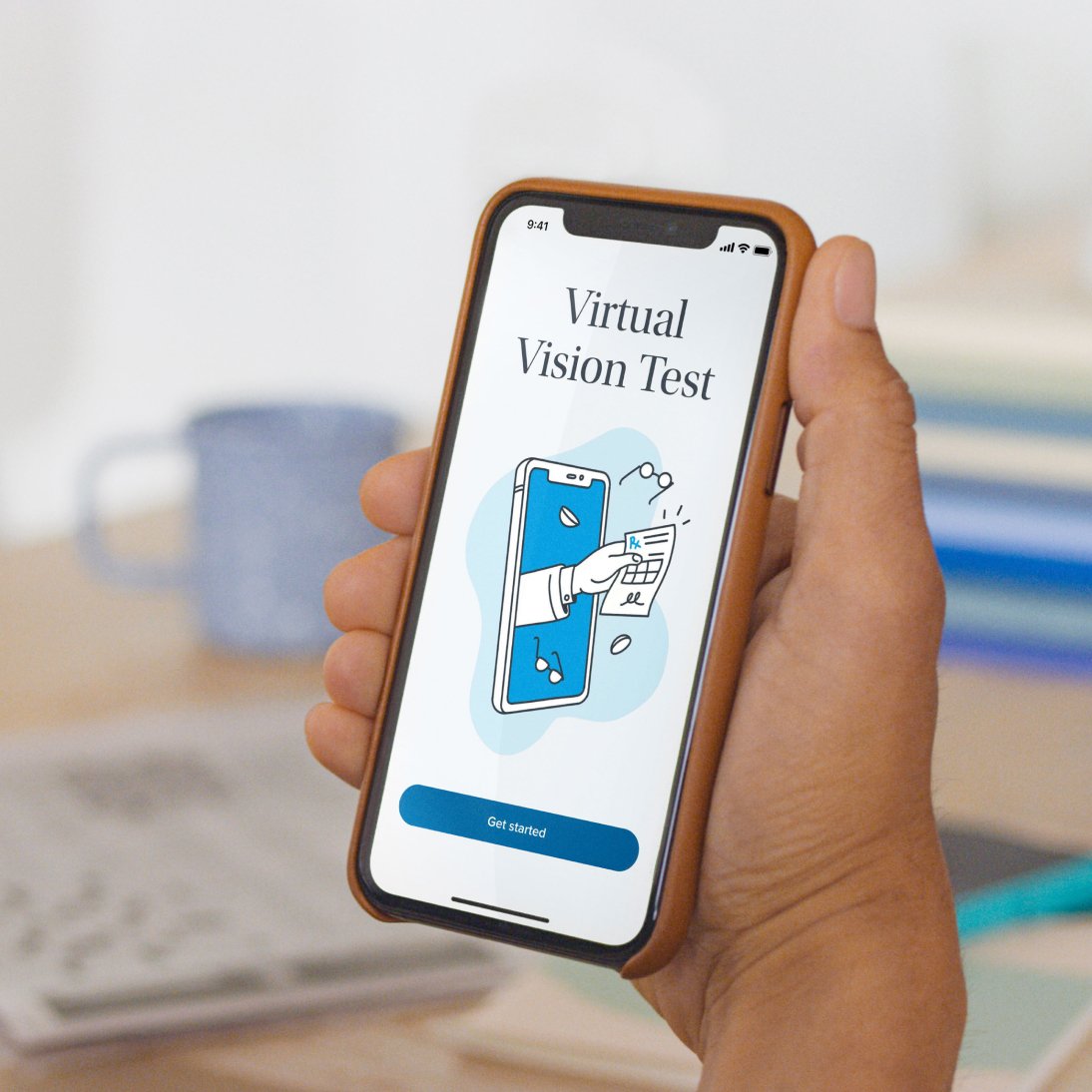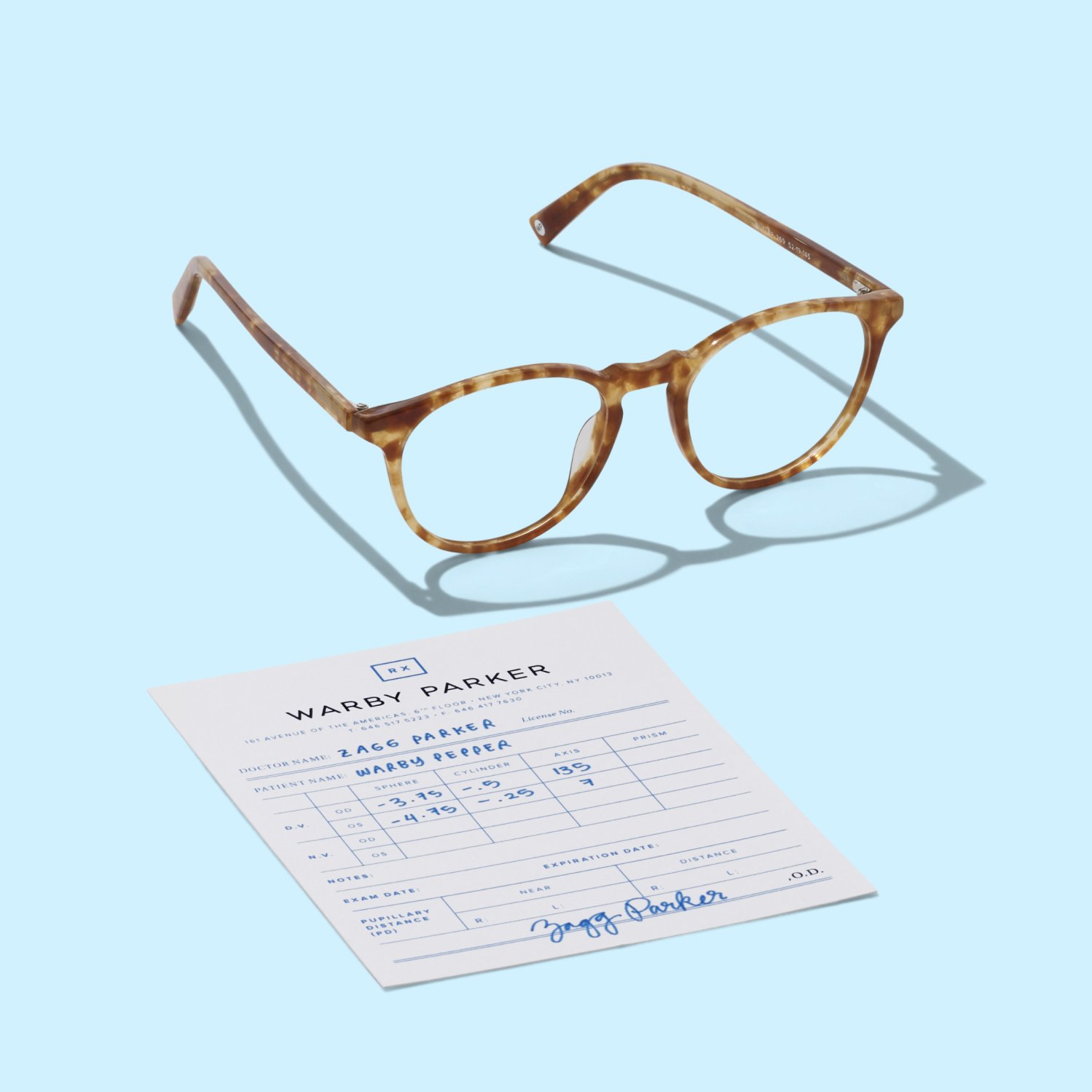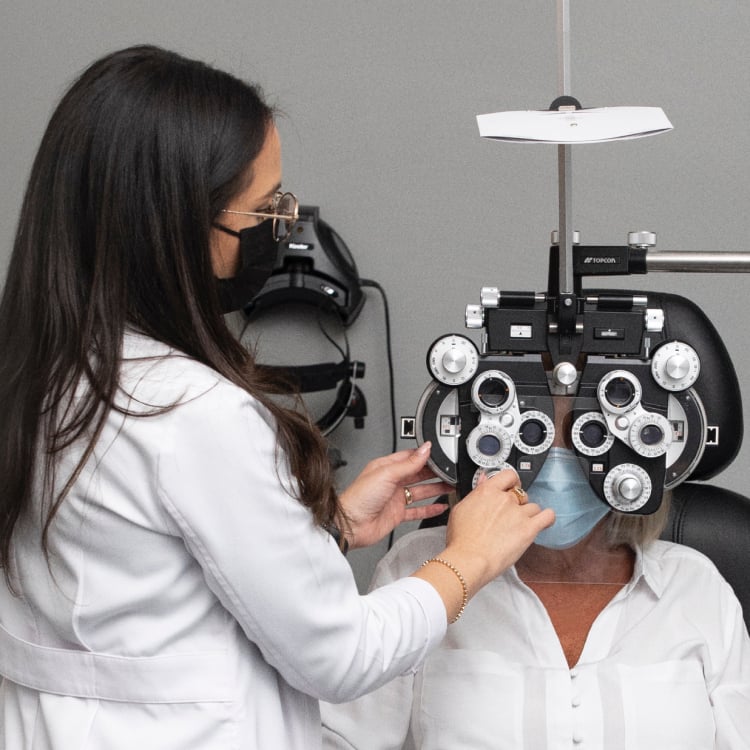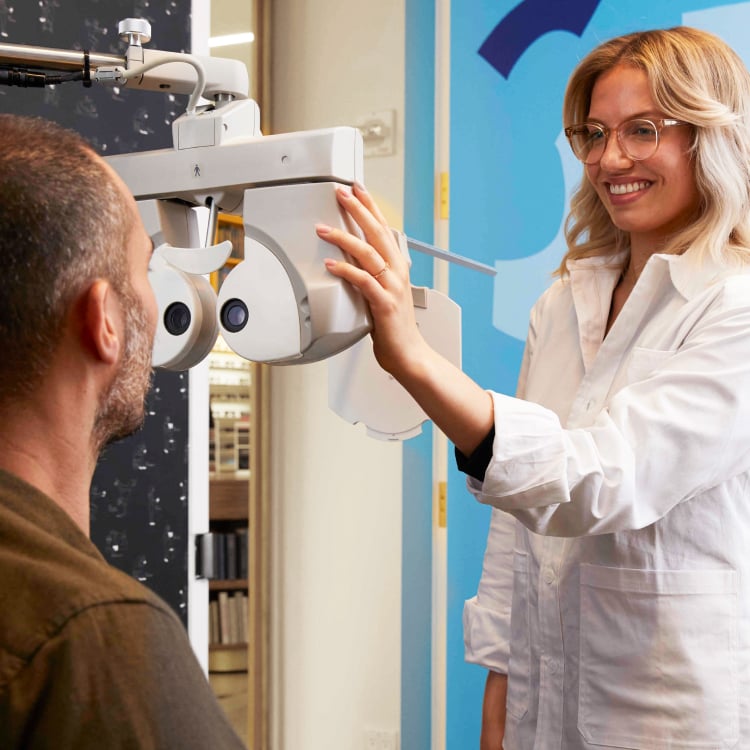A refraction test is one portion of a standard eye exam—the part where the eye doctor determines what, if any, prescription (or changes to your current prescription) are needed. This is the element of the exam most people think of when they think of an eye exam: Looking through the big machine (called a phoropter) and the eye doctor asking, “Which looks better? Number one or number two? How about now: number one or number two?”
This article will take a closer look at this specific part of an eye exam. To learn more about all the elements of a comprehensive eye exam, check out our guide: Eye Exams: What Is a Comprehensive Eye Exam?
What Is Eye Refraction?
When talking about the eye, light refraction has to do with how light rays bend as they pass through the cornea to the retina. Things that can affect an eye’s light refraction include the shape of the cornea (the outer layer of the eye), the length of the eyeball itself, and the aging of the lens (an inner part of the eye).
A refraction eye test is so named because it first and foremost assesses the eye’s light refraction and determines whether you have a refractive error.
Refractive Errors
Normal vision occurs when light enters the eye and focuses directly on the retina. When light doesn’t focus properly, it results in a refractive error. A refraction eye exam can detect:
- Myopia (nearsightedness) – Light focuses on a point in front of the retina, making it hard to see distant objects.
- Hyperopia (farsightedness) – Light focuses on a point behind the retina, making it difficult to focus on text and objects that are near.
- Presbyopia – Light focuses on a point behind the retina, but this is not the same as hyperopia. Sometimes, presbyopia is referred to as “age-related farsightedness” because it occurs naturally as people grow older. The lens in the eye loses its elasticity as people age, making it harder for it to adjust to focus light on the retina.
- Astigmatism – Light focuses on multiple points on the retina instead of just one, making objects look blurry at any distance.
What Happens During a Refraction Exam?
An optometrist or ophthalmologist performs this exam and usually will begin by checking how light bends through your eye. Some eye doctors use a computerized instrument to do this (called an autorefractor), but many will assess this simply by shining a light in each of your eyes (this handheld device is called a retinoscope). As they shine the light in your eye, they’ll look to see how the light reflects off the retina. This helps them identify refractive errors.
The next portion of the refractive eye exam involves the phoropter—a machine that looks like a big mask with holes for you to look through. Looking through the holes, you’ll probably see a chart with letters (called a Snellen chart) on the wall 20 feet in front of you (or calibrated for 20 feet using mirrors or a computerized chart).
First, your eye doctor will ask you to read a row of letters—this checks your visual acuity (how sharply you can see text 20 feet away). Your eye doctor will then switch out the lenses you look through and ask you which lens makes your vision clearer. (This is when you’ll hear several times, “Which looks better? Number one or number two?”)
Eye Refraction Test Results
The result of your refraction eye exam is your prescription! It will show the combination of lens strengths you’ll need for your glasses or contacts in order to have as close to 20/20 vision as possible. Your prescription may accommodate for one or more refractive errors—for instance, you may be farsighted and also have astigmatism.
Learn more: How to Read Your Eye Prescription
Does Medicaid or Medicare Cover a Refraction Test?
While Medicaid and most vision insurance plans will cover the cost of a refractive eye exam, some insurances do not. For instance, some medicare plans only cover exams that are necessary for your health—not routine exams. In these cases, the medical portion of the eye exam may be covered, while the refraction test is not.
In an explanation of your benefits, you might see mention of “determination of refractive state.” This refers to the refraction eye exam. So, if your benefits state that “determination of refractive state is excluded from coverage,” then that means you’ll be responsible for any fees associated with the refraction portion of your eye exam.
If you’re unsure of your coverage, check with your insurance provider directly. If you have an HSA or FSA, you can use those funds for any portion of an eye exam that might not be covered.
A Refraction Exam Is the Key to Your Prescription
The bottom line? You can’t get a new prescription for glasses or contacts (or a change to your current prescription) without a refraction eye exam. Only a refraction test can diagnose refractive errors and provide a fine-tuned assessment of the lens strength(s) needed for your prescription.
Make an appointment and experience a refraction exam for yourself! Interested in contacts? Be sure to select the option for a contact lens exam when booking.
So, tell us: Which option looks better for you—number one or number two?

